This vibrant ceramic washbasin is a cheerful and artistic addition to any bathroom. Its hand-painted floral pattern and octagonal shape create a unique and eye-catching design.
Hand-painted design: The stylized orange flowers and vines on a white background bring a touch of nature indoors. Each basin is unique due to the hand-painted nature of the design.
Octagonal shape: This unusual shape adds a modern and geometric element to the design.
Ceramic construction: Durable, easy to clean, and resistant to scratches and stains.
Orange rim: The bold orange rim complements the floral pattern and adds a vibrant pop of colour.
Gold-toned accents: The drain and faucet (shown in the image) provide a touch of elegance and warmth.
This washbasin would be perfect for a bohemian, eclectic, and nature-inspired bathroom design. It would also be a great way to add a pop of colour to a neutral bathroom.




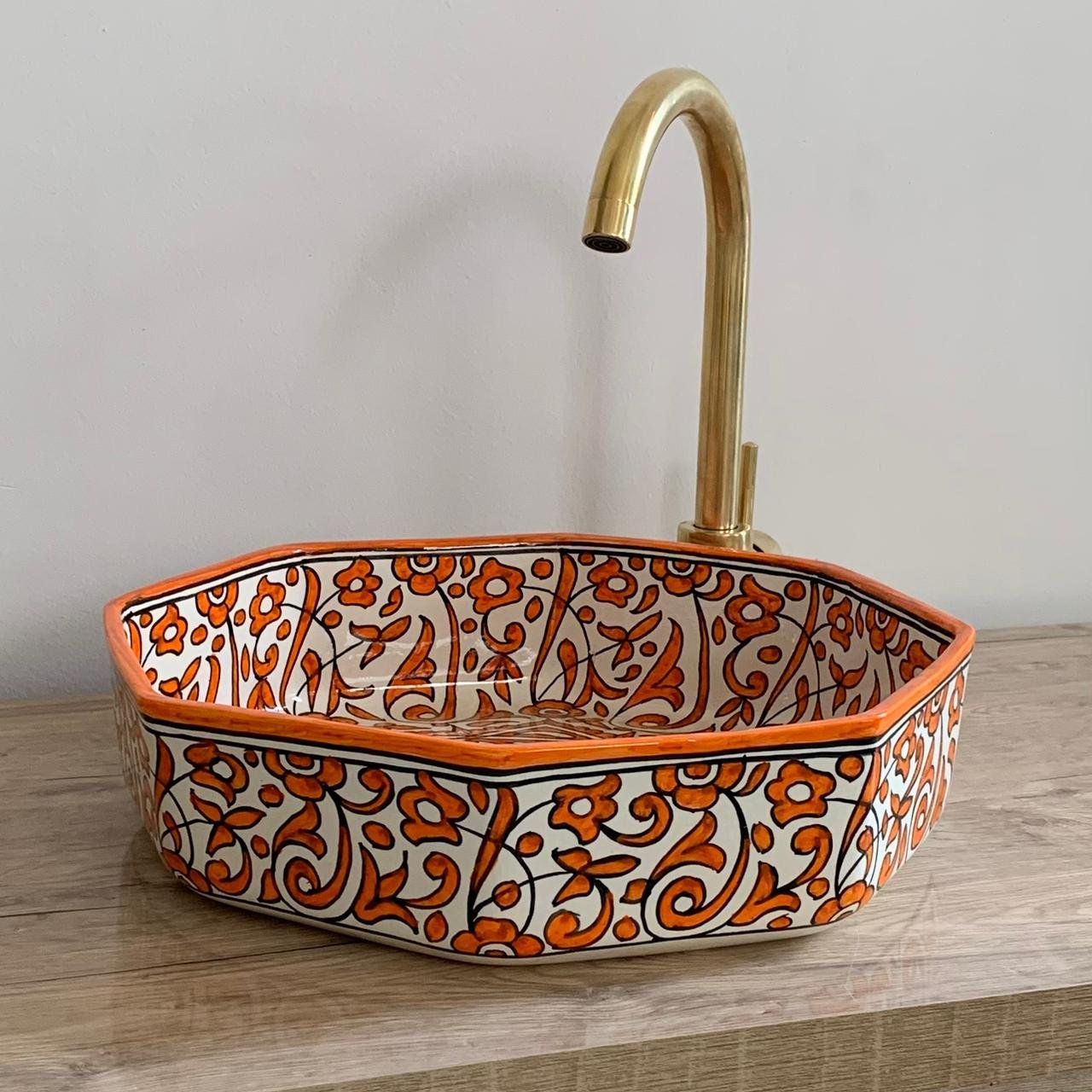
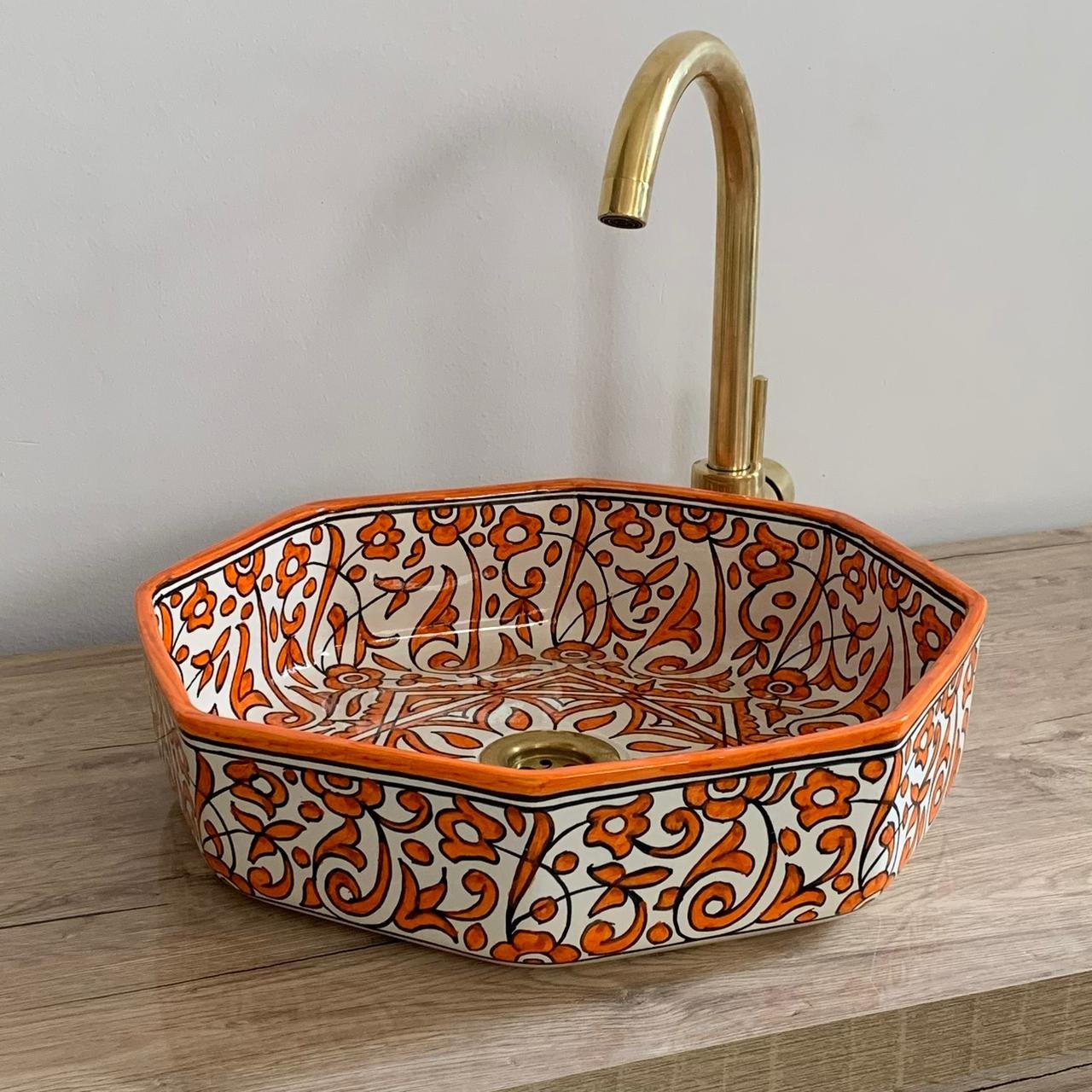
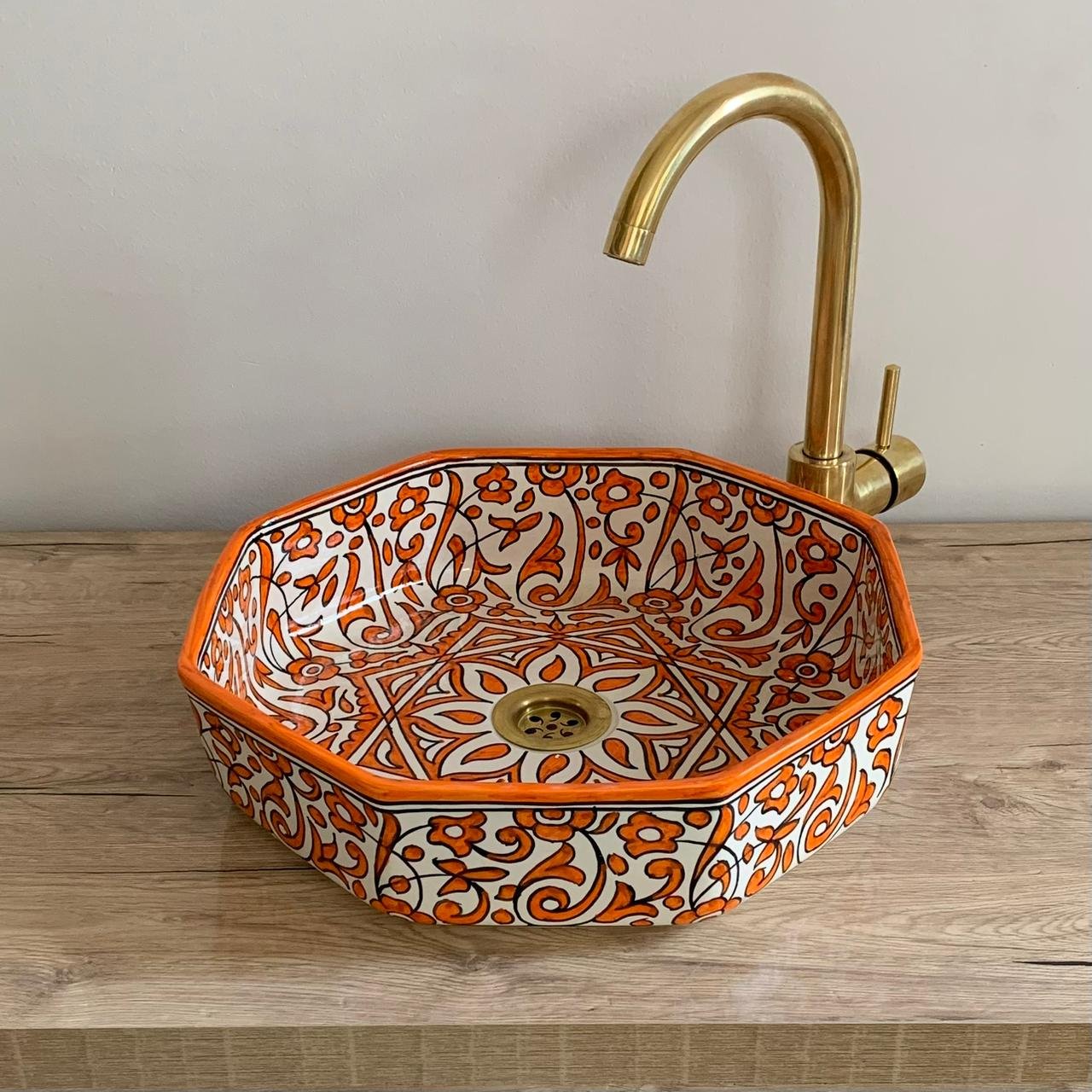
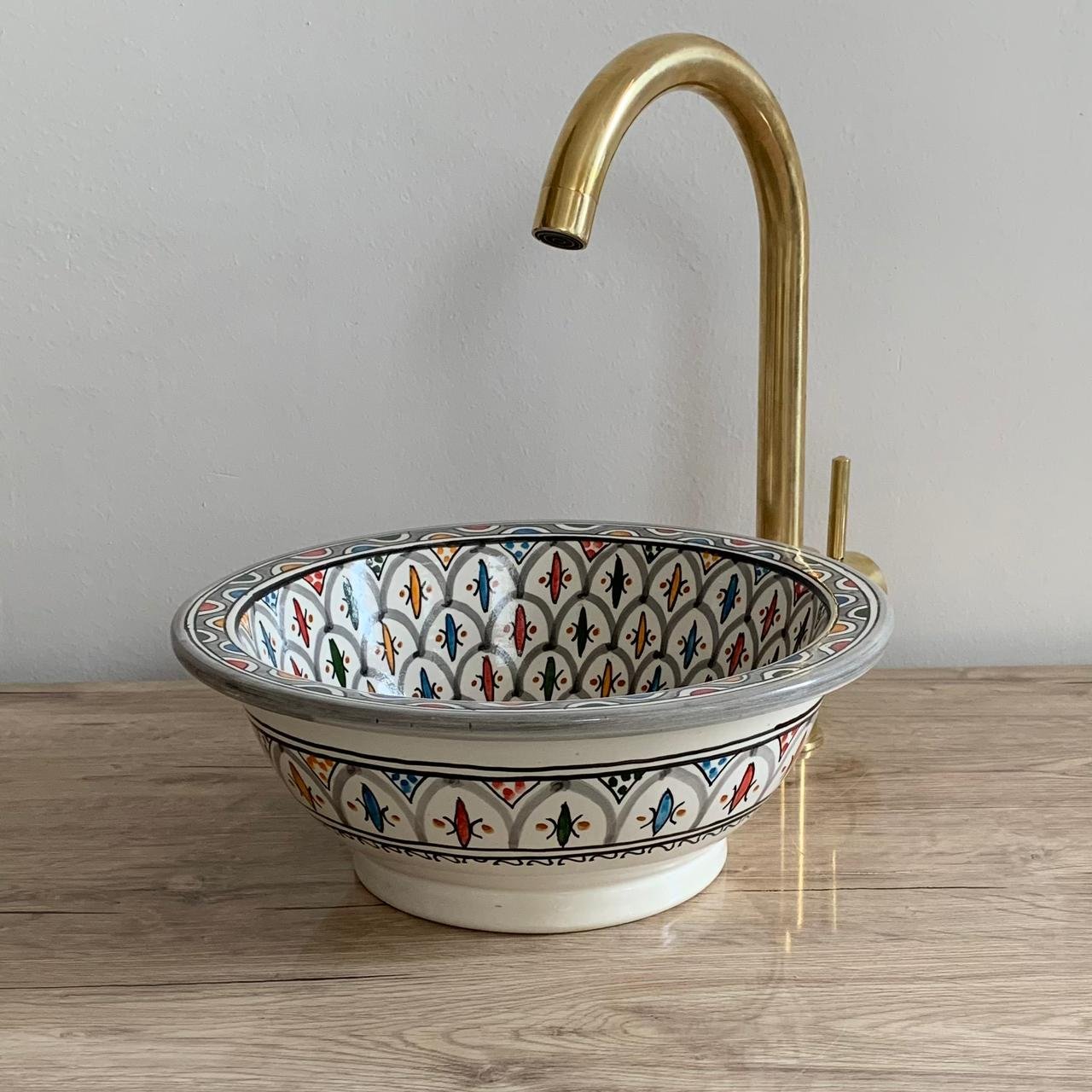
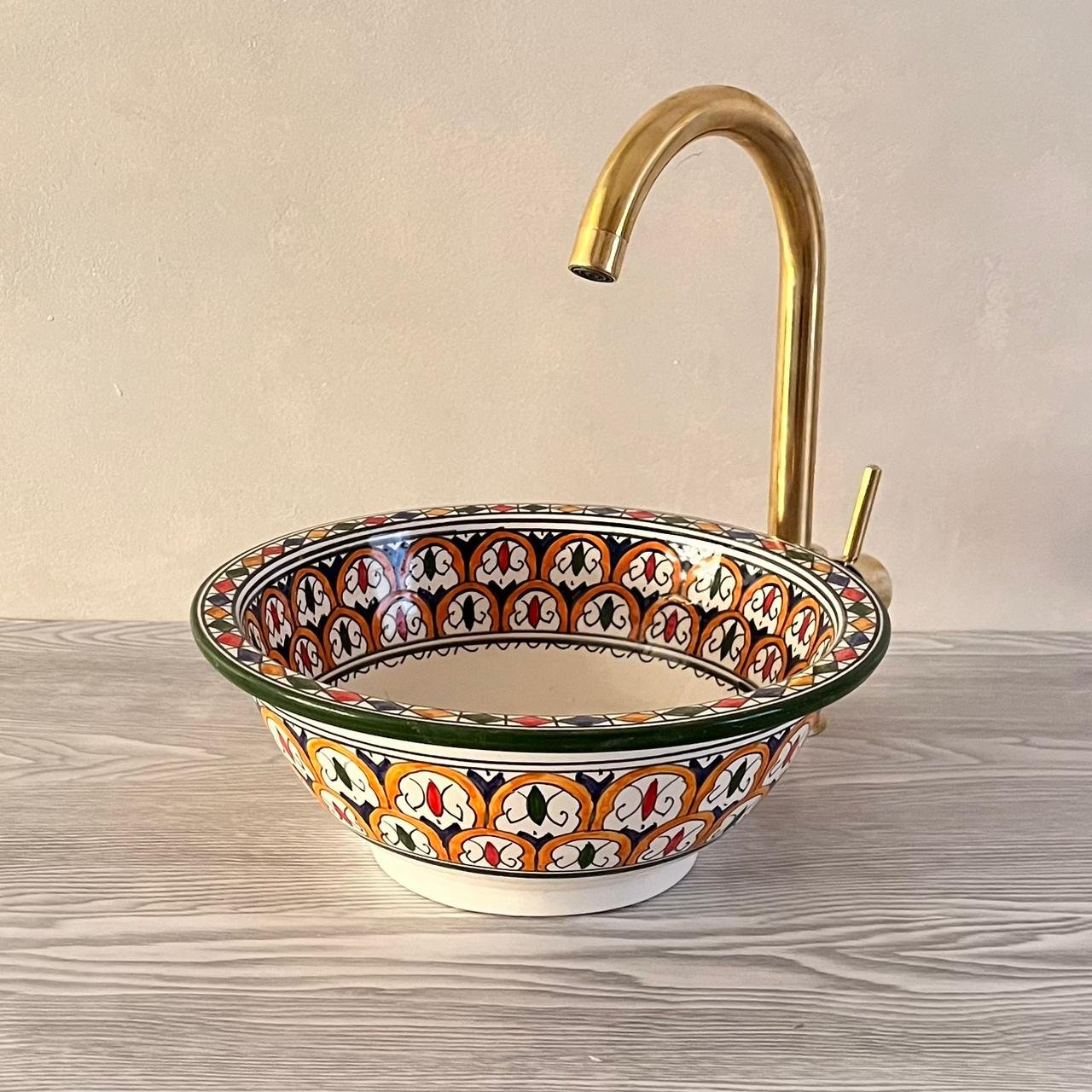

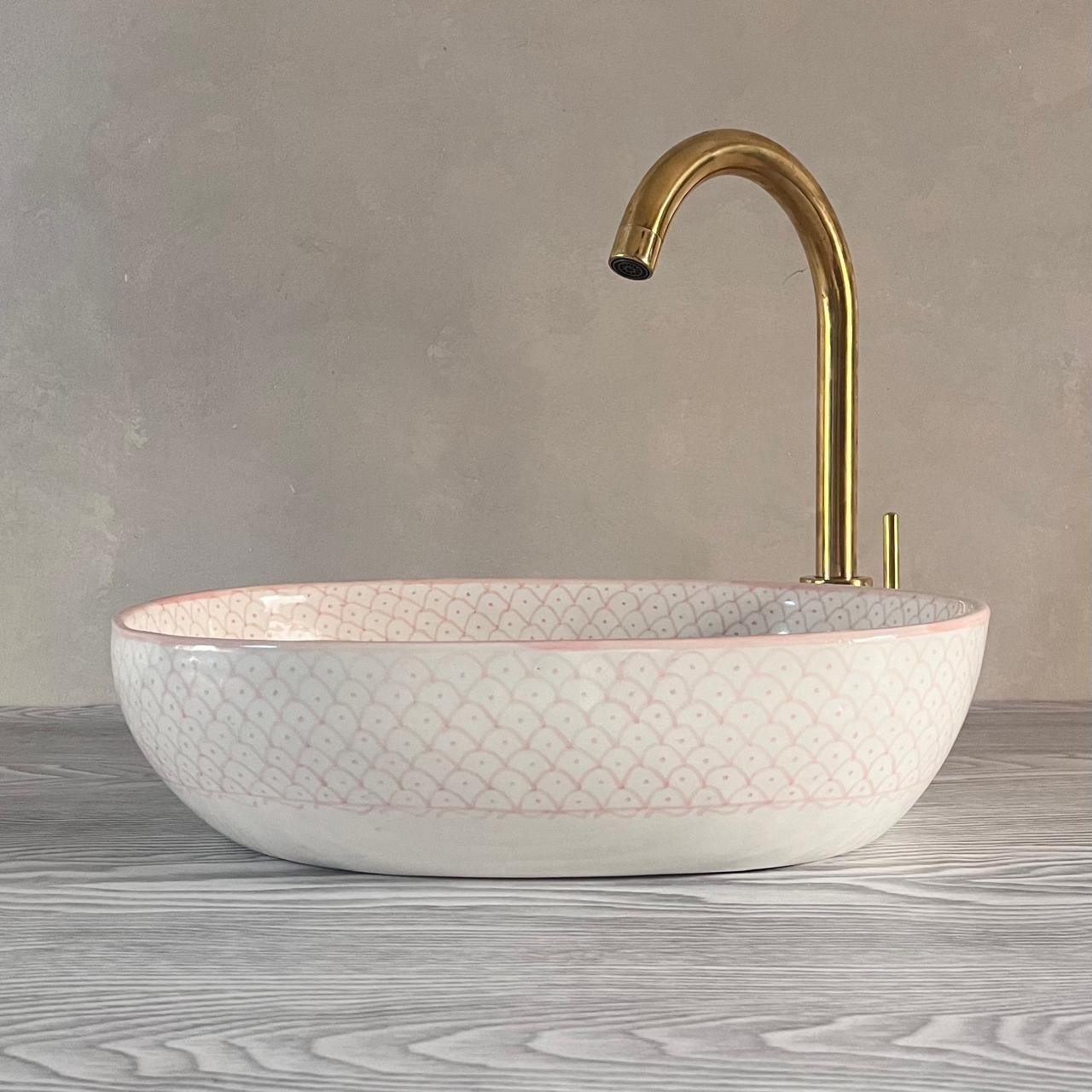
Reviews
There are no reviews yet.